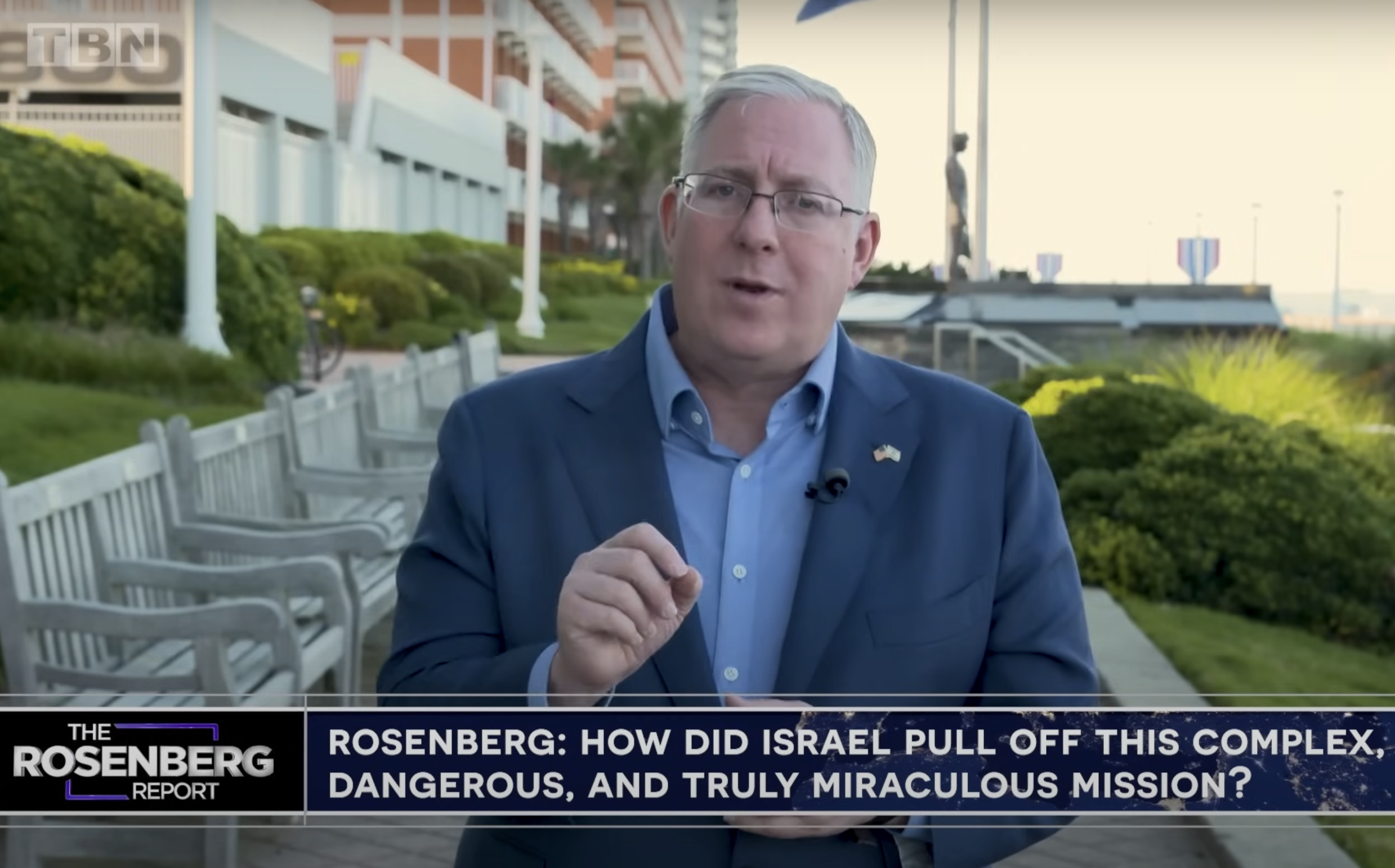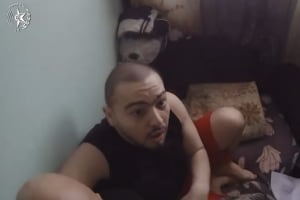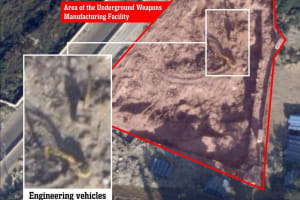‘I immediately broke down in tears’ - Joel Rosenberg recounts dramatic moments when he first learned of the heroic hostage rescue in Gaza

“Suddenly, after so much pain, darkness, death and depression, we finally had something to celebrate.”
Like most Israelis, ALL ISRAEL NEWS Editor-in-Chief Joel Rosenberg will never forget the moment he heard about the daring rescue operation of four hostages from the Gaza Strip on June 8. It was a Saturday afternoon.
“It was moving to me. It was moving to people all over the country,” Rosenberg said on his weekly TBN program, THE ROSENBERG REPORT. “Israelis enjoying a day at the beach erupted in cheers as one of the lifeguards passed on the news, and soon families of the hostages were arriving at a hospital in Tel Aviv to see and embrace their loved ones for the first time since they were taken hostage by Hamas terrorists at the Nova Music and Dance Festival in southern Israel, eight months earlier. The still images of these reunions and the videos were soon flashing across TV sets and social media channels all over Israel and all over the world.”
“And I have to tell you that I immediately broke down in tears. I just was emotionally overwhelmed with gratitude,” Rosenberg recounted. “First for the soldiers, the bravery of what they had done, the intelligence operatives, everybody involved in this complex operation, but also with gratitude to the Lord for setting these four captives free after the prayers of millions of people all over the world for so, so long. I was asking the Lord through those tears to show the same mercy to the 120 hostages that still remain in Gaza, including five Americans.”
The four hostages – Noa Argamani (25), Almog Meir Jan (21), Andrey Kozlov (27), and Shlomi Ziv (40) –were rescued by forces of the IDF, ISA, and the police commando ‘Yamam’ from two separate locations in the heart of Nuseirat in a complex, special daytime operation.
In a breakdown analysis of the dramatic events posted on YouTube, Rosenberg noted that all four hostages were under heavy guard by Hamas gunmen.
“It's important to note that they were surrounded by a combination of civilian families and terror operatives,” he added. “For weeks, Israeli intelligence secretly monitored the apartment buildings, studying the floor plans, studying the streets in the neighborhoods, studying the patterns of what was happening there, and helping the IDF and an elite counter-terrorism police unit known as Yamam develop a rescue plan.”
Israeli commanders chose to launch the operation in broad daylight to maintain the element of surprise, Rosenberg explained. The terrorists would not expect IDF troops to approach the area during daylight. Plus, operating in daylight would help the Israeli commandos to identify and recognize the hostages and distinguish them from their Hamas captors.
The sequence of events that ensued could have been taken from a Hollywood action movie.
“As the first units moved into position, the men were dressed as Palestinian refugees, driving a beat-up old truck, carrying mattresses and telling local residents in in fluent, perfect Palestinian Arabic that they were from Rafah, the most southern, most city in Gaza, and that they were relocating to this neighborhood in the Nuseirat refugee camp to be safe from the IDF. The women commandos dressed like veiled Arab women,” Rosenberg described.

Before moving in to extract the hostages simultaneously from their separate locations, Israeli forces had to create a diversion that would attract the terrorists away.
“They used airstrikes and ground forces, and they started attacking buildings in a nearby neighborhood that they knew from intelligence and from observation were filled with Hamas terrorists. This caused chaos,” Rosenberg described.
The diversion worked.
At this exact time, Noa Argamani, who became a symbol for the plight of all hostages on Oct. 7, was washing dishes in the kitchen of the civilian family where she was being held. At first, she didn't even believe that the commandos were really IDF soldiers. But as she saw and heard the gunfire increasing around her and her captors dead and dying, she became quickly convinced this was really happening.
“Noa, we came to save you. We came to bring you home,” the IDF soldiers then told her.
“She was shocked, I think she didn't understand and didn't really believe what was happening,” one of her rescuers shared in the days following the operation.
At the same time, a different special ops team stormed the family home of Palestinian journalist and terrorist Abdallah al-Jamal. He was holding the three male hostages Meir Jan, Kozlov and Ziv in a separate room.
“Everything is ok. We have come to rescue you, be calm,” one soldier told Jan, giving him a fist-bump that was documented in footage recorded by his helmet camera.
However, as Rosenberg noted, “The rescue of the three men was not going as planned. Hundreds of Hamas terrorists suddenly understood there had been a diversion and that the hostages were being rescued by Israeli forces. As they realized what was happening, they opened fire on the men's getaway vehicle and it quickly became disabled.”
“The Israeli Air Force had planned for this, and they had a plan. They began heavy airstrikes on those Hamas positions, creating what one IDF commander called a ‘ring of fire’ around their commandos and the three rescued hostages and the disabled truck. It worked. The IDF was able to get a second vehicle to the location amidst the firefight move, the male hostages – freed hostages out of that vehicle and into the new vehicle,” he explained.
Once the four hostages boarded two separate helicopters, the code word was radioed back to the IDF Central Command in Tel Aviv: “The diamonds are in our hands.”

Yet, the joy and relief felt across Israel were soon disrupted by terrible news. One of the valiant commanders of the rescue operation, Chief Inspector Arnon Zamora, who was leading a Yamam team, was shot and critically wounded by Hamas terrorists during the extraction of the hostages.
He succumbed to his wounds hours later. The Israeli government decided to name the entire rescue operation after him, ‘Operation Arnon’.
“Then came more bitter news, as one world leader after another over the next few hours and days, began condemning Israel's rescue operation. Now, why in the world would they do that?” asked Rosenberg.
“Because Hamas’ so-called Health Ministry in Gaza told reporters that more than 270 innocent Palestinian civilians had been killed and more than 700 wounded during the Israeli operation… and most of the media immediately ran with the story… Immediately accepted the word of Hamas, parroting the Hamas messaging and accusing Israel of massacring Palestinians.”
While the IDF has not denied that Palestinians were killed in the operation, military officials argue two different points. First, they say the actual number of civilian casualties was far lower than what was claimed in Gaza's Health Ministry reports. Second, the IDF emphasized that the vast majority of the Palestinians who were killed were, in fact, Hamas terrorists.
As Rosenberg elaborated, “Some had been holding the four Israelis hostage in those apartments. Others were Hamas terrorists who had been guarding the apartment buildings and the neighborhoods in other buildings and apartments around the ones where the hostages were held. Others that were killed were Hamas terrorists who had engaged IDF forces with heavy machine gun fire and rocket-propelled grenades, and that Palestinian civilians were also killed.”
“Hamas didn't have to start a massive firefight in a civilian neighborhood with hundreds of Hamas terrorists opening fire and putting everyone in the neighborhoods at risk,” he stressed. “And yet that's what Hamas did. And yet the condemnations from the world came not against Hamas, but against Israel.”
THE ROSENBERG REPORT airs Thursday nights at 9 p.m. EST and Saturday nights at 9:30 p.m. EST – on the Trinity Broadcasting Network (TBN), the most-watched Christian television network in the United States.

The All Israel News Staff is a team of journalists in Israel.
You might also like to read this:















